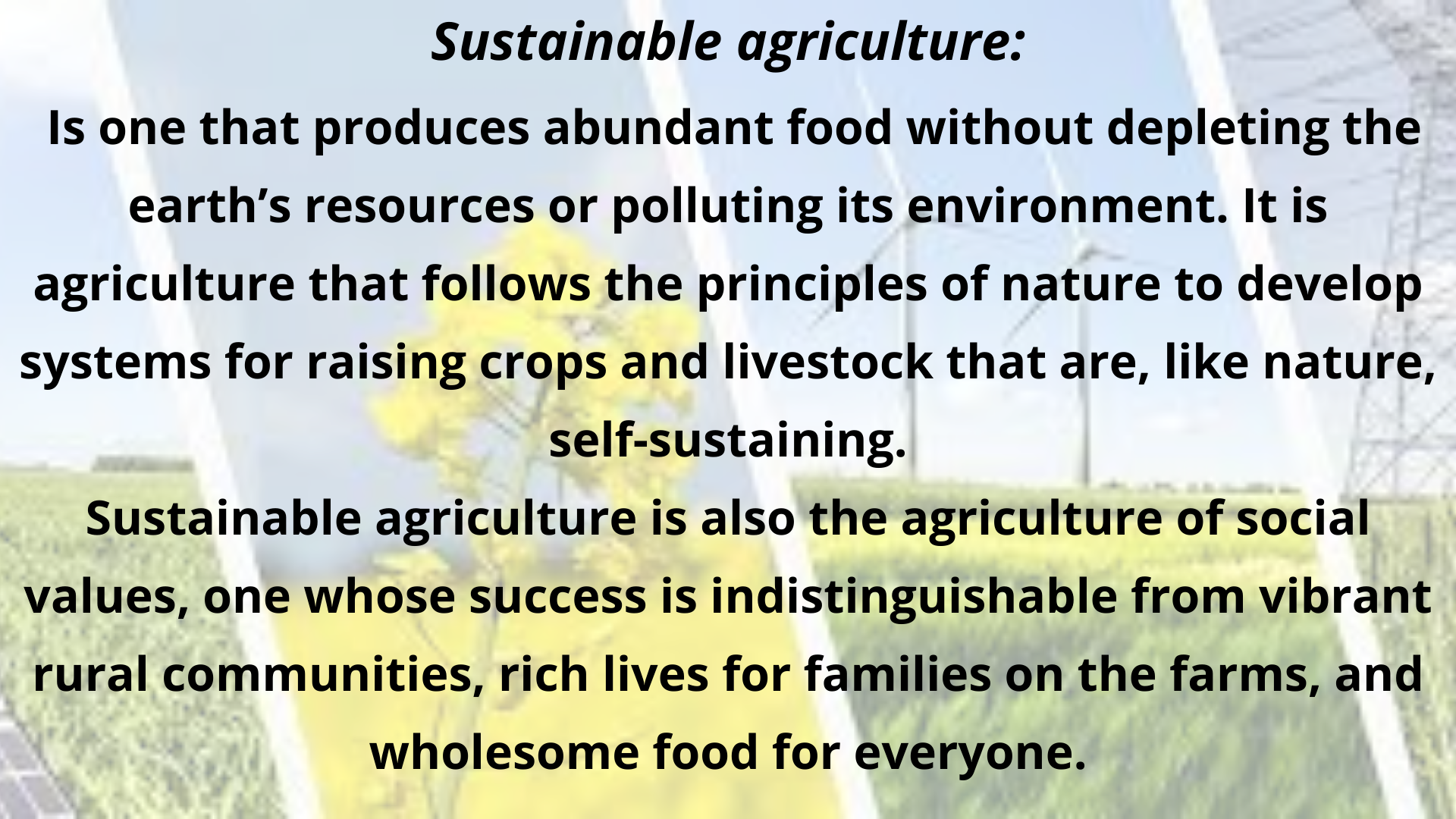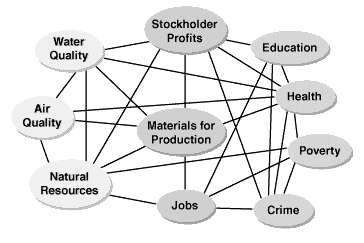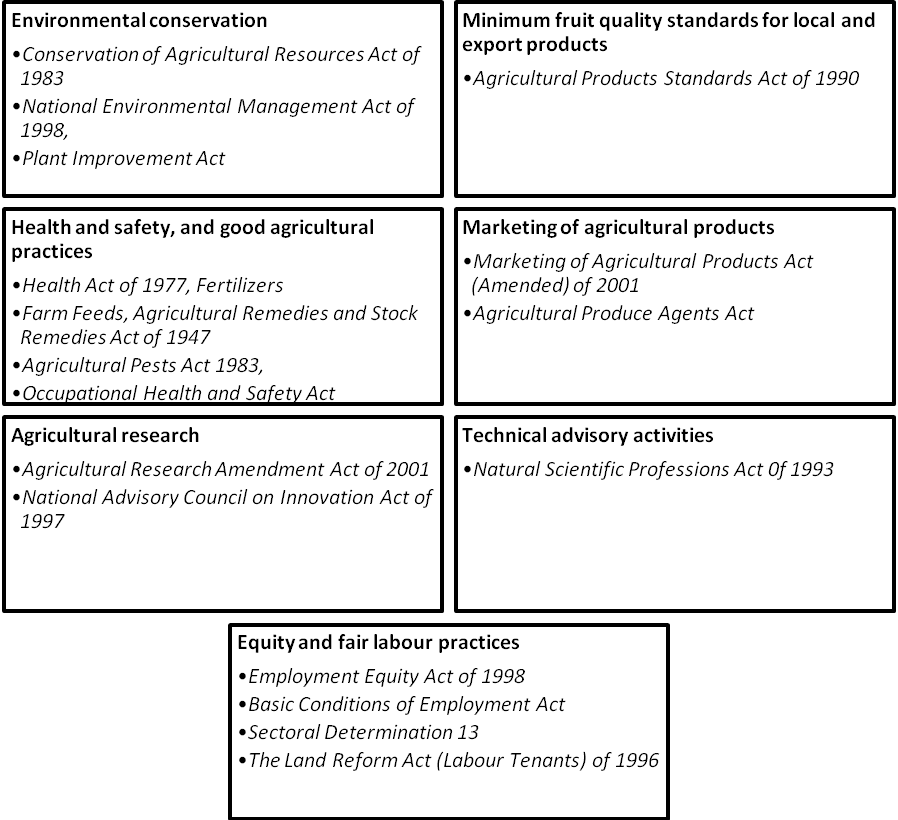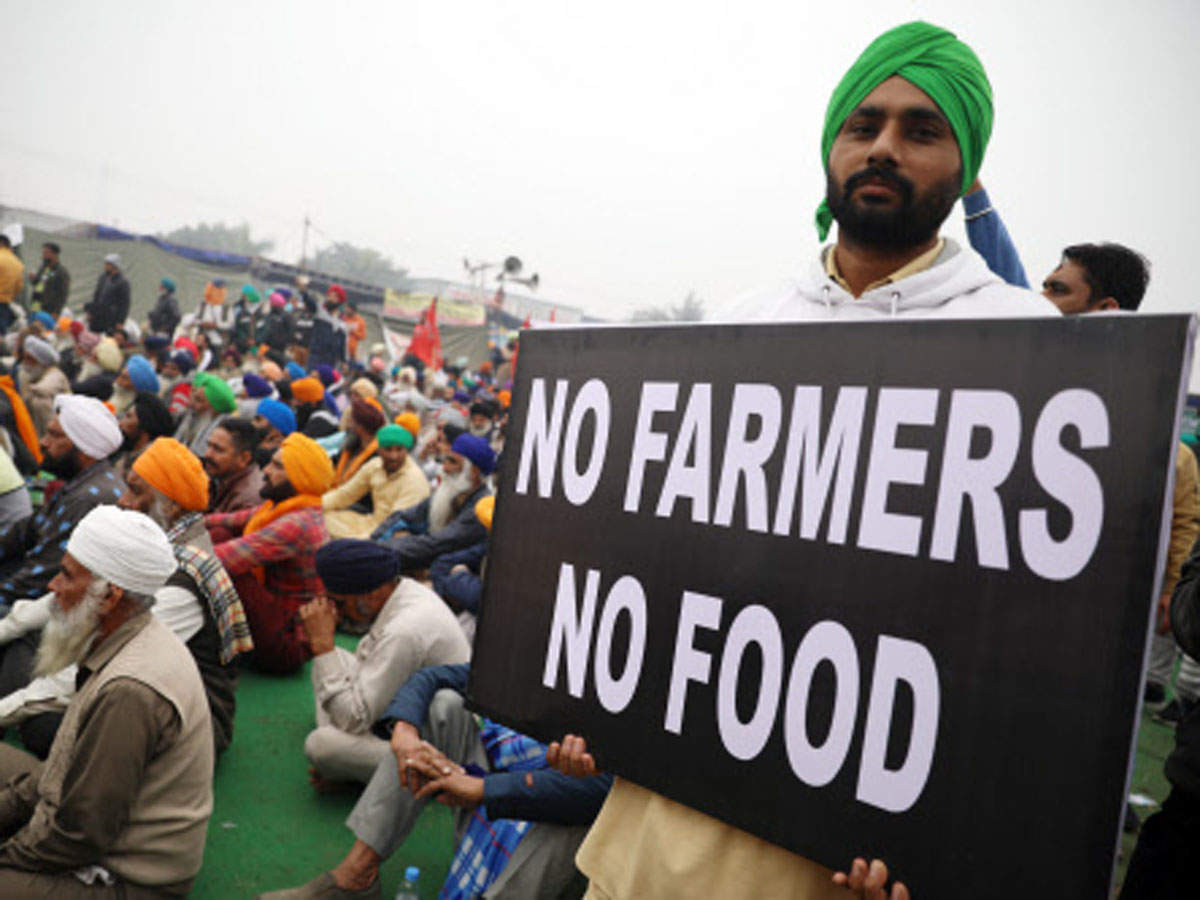
The WWF report on sustainability in agriculture in SA views agriculture as the foundation of developing economies. As one of these economies, South Africa needs to ensure a healthy agricultural industry that contributes to the country’s gross domestic product (GDP), food security, social welfare, job creation and ecotourism, while adding value to raw materials. But the health of the agricultural sector depends on the sustainability of farming methods. Farming practices must therefore not only protect the long-term productivity of the land, but must also ensure profitable yields and the well-being of farmers and farm workers.
Sustainable agriculture is a philosophy as well as a farming system as it has roots in a set of values that reflects a state of awareness of ecological and social realities and one’s ability to take preventative action. It also involves the design and management processes that work with natural processes to conserve all resources, minimise waste and environmental impact while maintaining and improving productivity
Sustainable Agriculture combines three main goals:
- environmental health
- economic profitability,
- and social and economic equity.
Sustainability
“Able to be continued indefinitely without a significant negative impact on the environment or its inhabitants.”
Sustainability rests on the principle that we must meet the needs of the present without compromising the ability of future generations to meet their own needs. In other words, we must balance our need for profits, and outputs to satisfy our market, with the need to conserve our natural resources in such a manner that it is not unnecessarily harmed.
But how will we know if what we are doing is sustainable? We need to look at our sustainability indicator measures…
Sustainability Indicator
An indicator is something that helps you understand where you are, which way you are going and how far you are from where you want to be.
A good indicator alerts you to a problem before it gets too bad and helps you recognize what needs to be done to fix the problem.
Indicators of a sustainable community point to areas where the links between the economy, environment and society are weak.
They allow you to see where the problem areas are and help show the way to fix those problems.
Indicators of sustainability are different from traditional indicators of economic, social and environmental progress.

Let’s think back on our Community?
What are our social values?
Do we need money more than caring for our environment?
Do we pay attention to erosion, pollution and degradation?
Are we aware of our invasive species of plants and animals?
Are we simply desperate to survive and make some money at all cost?
Are we greedy to make a lot more money than we need without real care for our environment?
Let’s look at some “indicators” that would tell you whether your agri-business is sustainable. The tables below compare traditional indicators with sustainable community indicators.
|
Economic/Political Indicators |
||
|
Traditional Indicators |
Sustainability Indicators |
Emphasis of Sustainability Indicators |
|
Average income |
Number of hours of paid employment at the average wage required to support basic needs |
What wage can buy Defines basic needs in terms of sustainable consumption |
|
Unemployment rate Number of companies Number of jobs |
Diversity and vitality of local job base Number and variability in size of companies Number and variability of industry types Variability of skill levels required for jobs |
Resilience of the job market Ability of the job market to be flexible in times of economic change |
|
Environmental Indicators |
||
|
Traditional Indicators |
Sustainability Indicators |
Emphasis of Sustainability Indicators |
|
Ambient levels of pollution in air and water |
Use and generation of toxic materials (both in production and by end user) Vehicle miles travelled |
Conservation and cyclical use of materials |
|
Cost of fuel |
Total energy used from all sources Ratio of renewable energy used at renewable rate compared to non-renewable energy |
Use of resources at sustainable rate |
|
Social Indicators |
||
|
Traditional Indicators |
Sustainability Indicators |
Emphasis of Sustainability Indicators |
|
Standardized test scores |
Number of students trained for jobs that are available in the local economy Number of students who go to college and come back to the community |
Matching job skills and training to needs of the local economy |
|
Number of registered voters |
Number of voters who vote in elections Number of voters who attend town meetings |
Participation in democratic process Ability to participate in the democratic process |
Legislation Impacting On Sustainability
The employment of resources in farming operations must be compliant with legislative requirements. These legal requirements, which are promulgated as acts of parliament, effectively place boundaries on the various production and marketing activities and how they are conducted. The following are examples of some of the activities and the related Act(s):

Farmers should be aware of the key requirements of these and other relevant legislation when developing strategy and operating the farm. Compliance with the requirements may involve costs that must be factored into the budget and non-compliance may lead to fines or even imprisonment.
